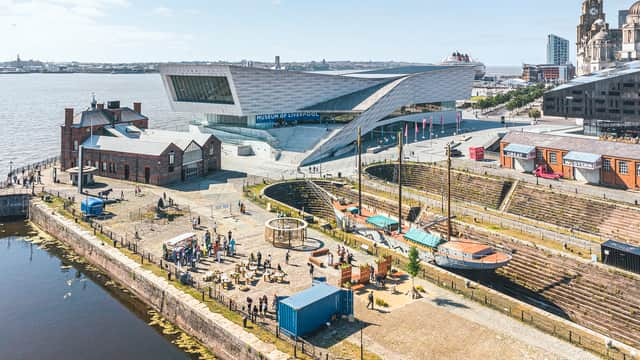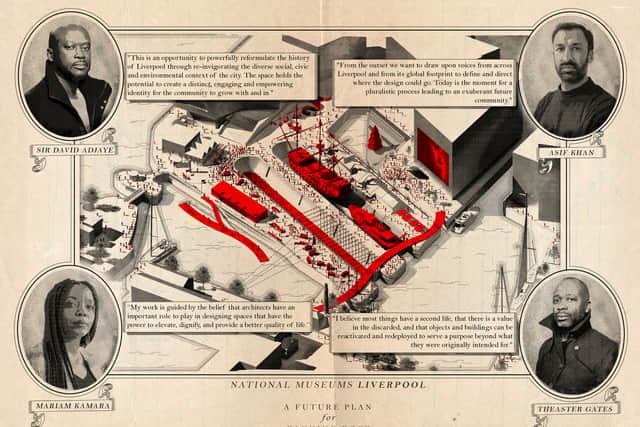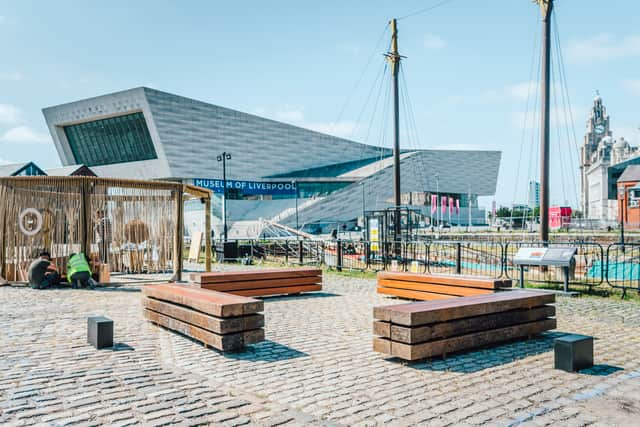Liverpool waterfront: Architects and artist for transformation of Canning Dock announced


A team of architects and an artist have been selected to begin the transformation of Liverpool’s waterfront between the Royal Albert Dock and Mann Island.
The landmark project will redevelop Canning Dock, starting with Dr Martin Luther King Jr Building, which is next to the International Slavery Museum.
Advertisement
Hide AdAdvertisement
Hide AdThe scheme will seek to bring the dock’s history in the transatlantic slave trade to the public - to educate and inform.
Architects Sir David Adjaye, Mariam Kamara, the Asif Khan Studio and artist Theaster Gates will spearhead the project as part of National Museums Liverpool’s (NML) 10-year plan of reimagining the city’s waterfront.
The team were selected as the winners of the NML’s Canning Dock competition as part of their race equality programme.
The competition was supported by £120,000 of funding from the Liverpool City Region Combined Authority.


What is the project and when will it start?
Advertisement
Hide AdAdvertisement
Hide AdThe NML said the starting point and highlight of the transformation will be the redevelopment of the Dr Martin Luther King Jr Building.
It will be at the very heart of the reinvigorated International Slavery Museum, which recently received £9.9 million funding from The National Lottery Heritage Fund.
A dramatic new front door will lead to spaces to explore and investigate the transatlantic slave trade and legacies.
Work is due to start on site, subject to funding, in 2024.
New pedestrian links to the Canning Dock will be created and bridges linking the Pump House to Mann Island will be built. The two dry docks, where slave ships were once refitted, will be transformed into an educational and cultural experience.
Advertisement
Hide AdAdvertisement
Hide AdThe scheme will use ‘compelling yet sensitive designs - ensuring Liverpool’s black communities are engaged and represented throughout’.


Reaction to the Canning Dock project
Councillor Mike Wharton, Liverpool City Region Portfolio Holder for Culture, Tourism and the Visitor Economy, said: “We are committed to tackling racial inequality and facing up to the shameful legacy of our region’s role in the slave trade.
“Our International Slavery Museum is the only museum of its kind in the country and a vitally important institution, not just locally but nationally and internationally too, in educating people on the sins of the past.
“Understanding and learning from our history is an integral part of building the brighter, fairer and more socially just future we all want – and our local museums are central to that.”
Advertisement
Hide AdAdvertisement
Hide AdSir David Adjaye, an award-winning Ghanaian-British architect has worked on a wide range of projects, including The National Museum of African American History and Culture in Washington DC.
He said: “Our collaborative team composed of technical architects, planetary architects and an artist envisions the NML Waterfront Transformation as an opportunity to powerfully reformulate the history of Liverpool through re-invigorating the diverse social, civic and environmental context of the city.
“Recognising the history of the surrounding waterfront, connecting the region’s cultural infrastructure, and creating a space in which the public realm and public arts can connect, holds the potential to create a distinct, engaging, and empowering identity for the community to grow with and in.”